
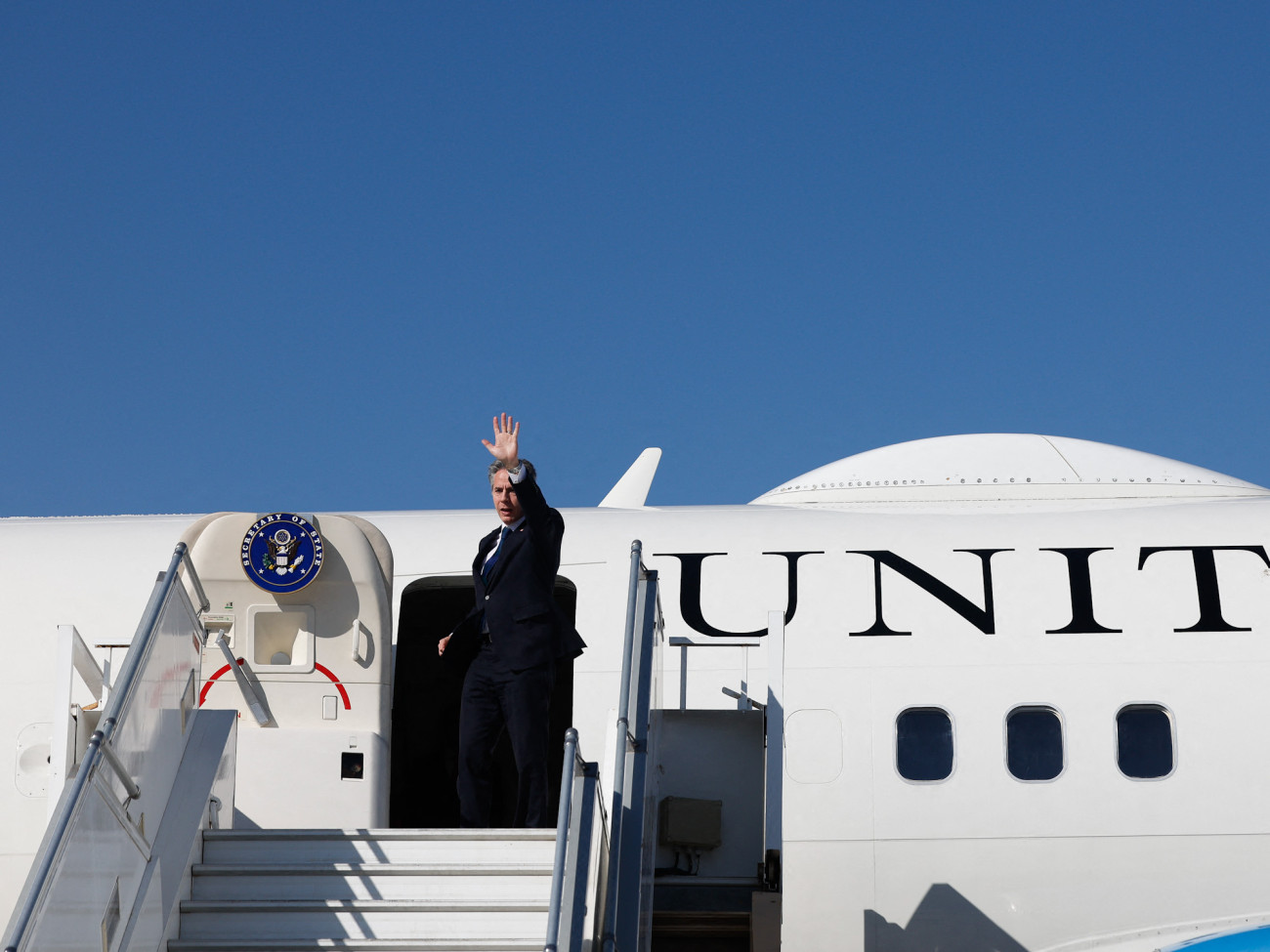
The Biden administration set forth five main policy objectives in reaction to the Oct. 7 Hamas attack against Israel and ensuing war in Gaza. The following report assesses the US government’s success or failure in meeting those goals more than six months on.
It represents the independent analytical judgments of one scholar at the Middle East Institute based on his policy research and feedback from colleagues and peers.
Executive Summary
-
The Biden administration set forth five main objectives in reaction to the Oct. 7 Hamas attack against Israel and ensuing war in the Gaza Strip:
-
Support Israel’s self-defense and objective of eliminating the threat posed by Hamas;
-
Secure the safe return of hostages;
-
Prevent a wider regional war;
-
Protect civilians and respond to a growing humanitarian crisis in Gaza; and
-
Create a post-war plan for reconstruction leading to a two-state solution and wider regional normalization efforts in coordination with regional and international partners.
-
-
Six months into the Israel-Hamas war, the Biden administration has not achieved enough progress toward these goals, although it has avoided some of the worst-case scenarios. Success is hampered in part by tensions stemming from the fact that some of the tactics and policy approaches are at odds with each other.
-
The Biden administration’s increased engagement in the Middle East and overdrive mode represents a major shift away from its approach to the region before Oct. 7. President Joe Biden initially came into office in 2021 looking to keep the region lower on its overall list of foreign policy priorities. The October 2023 Hamas attack and Iran’s April 2024 missile and drone strike on Israel have drawn the United States into the region more deeply than the Biden administration originally planned. The consequences of elevated Israeli-Iranian tensions over the first half of April are difficult to predict to date but will likely further complicate US policy strategy going forward.
-
This reactive, crisis-management approach, driven by tactics in search of a strategy, is heavily focused on military and security cooperation means, with crisis diplomacy aimed at securing temporary cease-fires and hostage releases.
-
Key analytical judgments on US Middle East policy since October 2023:
-
Actors in the region are the main drivers of events and trends.
-
The United States remains the most influential and powerful external actor in the Middle East, but it faces strong limits on its ability to determine outcomes.
-
US policy in the Middle East continues to suffer from a lack of synchronization and integration of security and diplomatic policy approaches.
-
America is also hampered by divisions at home.
-
US policy toward the Middle East remains mostly disconnected from a wider national security strategy, and the administration suffers from significant bandwidth challenges in advancing its overall national security approach.
-
Supporting Israel’s Self-Defense, Including Eliminating the Security Threat Posed by Hamas
-
Overall Grade for US Policy: A-
-
The Hamas attack on Oct. 7, 2023, killed more Israelis in one day than during the nearly four and a half years of the Second Intifada, from 2000 to 2005. This was the deadliest day in Israel’s history.
-
It took Israel several days to regain control of its own territory in the southern part of the country and either capture or kill individuals who infiltrated Israel from Gaza.
-
Israel began a devastating air campaign in the densely populated Gaza Strip in the hours after the initial attack.
-
President Biden delivered a speech within hours of the attack that reassured millions of Israelis. He traveled to Israel on Oct. 18 to send a message of strong support while also working to shape and influence Israel’s decision-making in the next phase. Biden delivered a prime-time speech to Americans upon his return from that trip calling for additional aid to Israel, which remains blocked by Congress.
-
Israel’s ground incursion into the Gaza Strip began on Nov. 2 and continues with changing scope and intensity. Throughout the six months of the war, the Biden administration made Israel’s self-defense a top priority and has consistently supported Israel’s goal of eliminating the security threat posed by Hamas.
-
The Biden administration continued to transfer weapons without restrictions and maintained strong intelligence coordination, even during episodes of public divisions between the two countries about the conduct of the war. In February, Israeli officials announced plans for a military ground offensive in Rafah, in southern Gaza along the border with Israel. The Biden team raised concerns on the grounds that it did not see a clear plan by Israel to protect civilians — an especially important issue given that Rafah has a population of around 1.4 million, most of whom are displaced from elsewhere in the Gaza Strip. At the same time, the Biden administration vetoed a United Nations resolution put forward by Algeria in February calling for an immediate cease-fire and proposed an alternative measure.
-
In late March and early April, the split between the Biden administration and the government of Israeli Prime Minister Benjamin Netanyahu on the proposed Rafah military incursion and planning for the “day after” the conflict became more visible. On March 25, the United States abstained on a vote at the UN Security Council calling for an immediate cease-fire.
-
Conclusion: The Biden administration showed strong support for Israel’s self-defense and the goal of eliminating the security threat posed by Hamas, even when diplomatic and political divides emerged, and it faced some harsh criticisms from domestic opponents to its policy. The United States continued to transfer weapons and maintain strong security and intelligence coordination with Israel. Israel’s military campaign has had a devastating impact on the capacity of Hamas to conduct attacks against Israel, but it remains to be seen how much Israel has degraded the threat over the long term, and the plans for post-war security are still unclear.
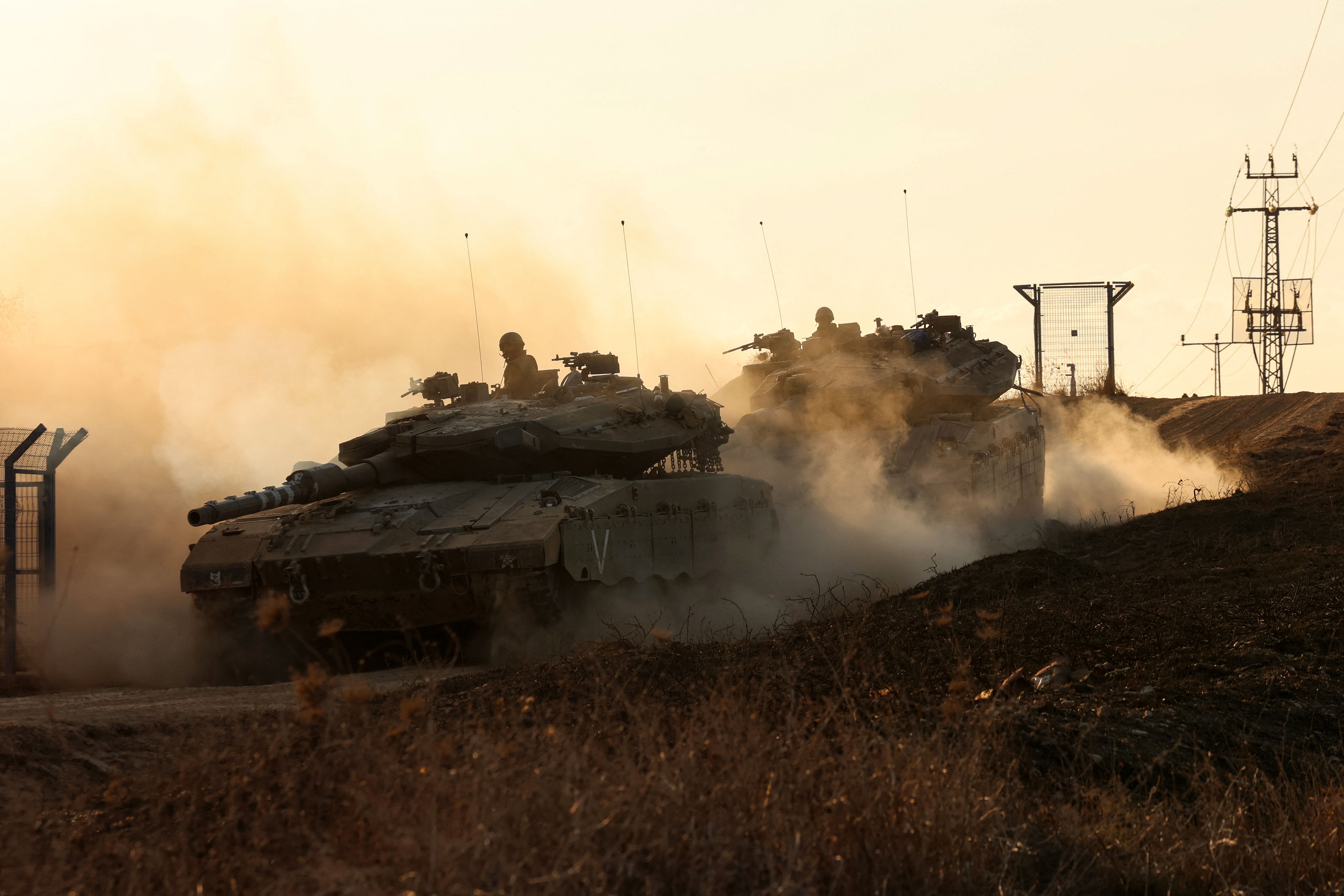
Securing the Release of Hostages Held by Hamas in Gaza
-
Overall Grade for US Policy: B-
-
Hamas, Palestinian Islamic Jihad, and other groups and individuals kidnapped and detained more than 250 Israelis and other foreign nationals. Individuals initially believed to have been kidnapped on Oct. 7 were subsequently found dead and killed in the early days of the war. Some were later found dead in captivity, possibly due to Israeli strikes.
-
The United States initiated early diplomatic efforts to secure the release of hostages, working in close coordination with Israel, Qatar, and Egypt, among other actors. In the first weeks of the Israel-Hamas war, US diplomats also worked to secure the release of thousands of Americans, mostly of Palestinian origin, who were trapped in the Gaza Strip but not held hostage.
-
This diplomacy has achieved some results. A total of 112 hostages have been released, including some American citizens. A week-long cease-fire from Nov. 24 to Dec. 1 led to the release of 105 hostages in exchange for more than 200 Palestinian prisoners.
-
An estimated 100 or so hostages remain in Gaza, but this number is imprecise because of uncertainty about potential casualties. As many as six Americans may remain in captivity in Gaza.
-
Top US officials, including Central Intelligence Agency (CIA) Director William Burns, US Secretary of State Antony Blinken, and President Biden himself, have engaged in talks for months, with multiple trips by Burns to various locations around the Middle East and Europe to negotiate. They have also engaged with hostage families, showing empathy and warmth that some families claim they did not receive from Israeli leadership.
-
More than four months of negotiations have yet to produce any additional hostage release. In February, the contours of a possible deal that Israel reportedly agreed to involve a six-week truce and the release of 40 hostages held in the Gaza Strip in exchange for an unspecified number of Palestinian prisoners held by Israel.
-
Discussions over a possible deal are complicated by a range of factors, including the fact that the parties to the conflict continue to use force, violence, military action, propaganda, and media statements to shape the calculations of those involved in the negotiations. These talks were also complicated by issues related to a possible return to northern Gaza of displaced Palestinians, Hamas demands for a full withdrawal of Israeli forces and a permanent cease-fire, and calls for additional aid.
-
The fact that Israel seeks to eliminate the leadership of Hamas while it negotiates with it through Qatar and Egypt illustrates the complexities of this current moment. An Israeli strike last January that killed Saleh al-Arouri, a senior Hamas official based in Beirut who was involved in cease-fire and hostage negotiations, likely impacted diplomatic efforts to secure additional hostage releases. In addition, Hamas propaganda, including the release of videos featuring young Israeli women held hostage in Gaza, is a form of psychological warfare designed to impact Israel’s domestic political debates.
-
Conclusion: Diplomacy produced some results in late November, but it remains incomplete.
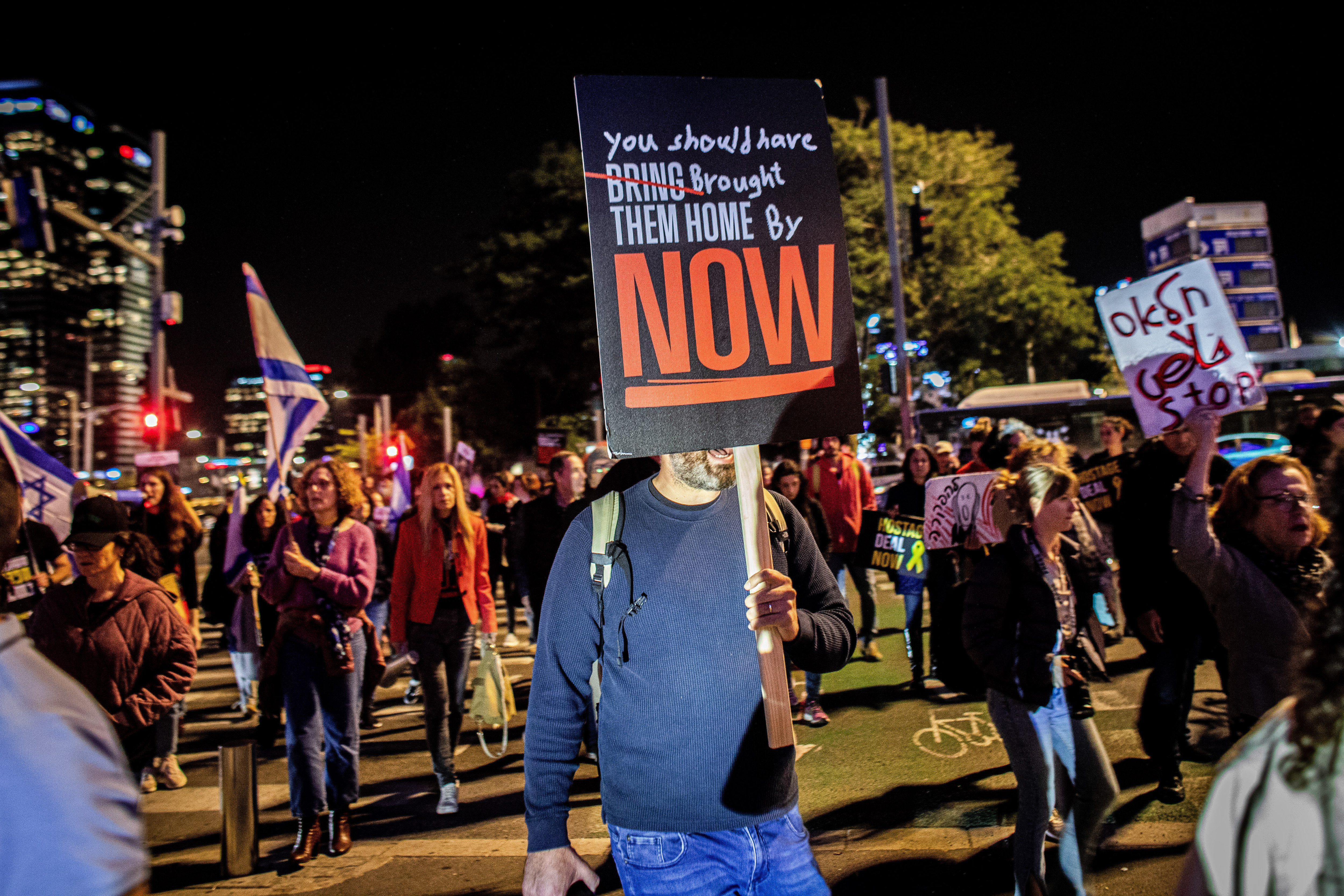
Preventing a Wider Regional War
-
Overall Grade for US Policy: C+
-
In addition to increased weapons transfers and security and intelligence coordination with Israel, the United States sent two aircraft carrier strike groups to the region in the early weeks of the war as a message of deterrence against Iran, Hezbollah in Lebanon, and other actors threatening to expand the war. The US military stepped up its presence and levels of alert around the region in the face of attacks and threats emanating from Iraq, Syria, Lebanon, and Yemen.
-
The Houthis in Yemen attacked international shipping in the Red Sea and linked the rationale for the attacks to their opposition to Israel’s military operations against Hamas in Gaza. The Houthis also targeted Israeli territory with ballistic missiles and drones. The Biden administration launched “Operation Prosperity Guardian,” a multinational military effort to defend the security and safety of shipping across the Red Sea involving more than 20 countries. In addition to this defensive coalition, the United States conducted a series of airstrikes in coordination with other partners against Houthi sites in Yemen.
-
Iran-backed militias in Syria and Iraq also targeted Israel and the US military presence in the region with hundreds of attacks. On Jan. 29, one of these militias killed three US soldiers serving at a military base in Jordan that provides support for the US-led effort to deal with the threat posed by the Islamic State. This attack triggered a series of US-led strikes in February against Iran-backed militias operating in Iraq and Syria.
-
Jordan faced considerable strains during this period, as heightened risks from regional conflict combined with its close ties to Palestinians in the West Bank, Gaza, and Jerusalem added to internal pressures. Iraq also faced rising internal opposition and tensions related to its ties to the United States and its military presence in the country.
-
Conflict and tensions between Israel and Hezbollah in Lebanon grew during the last six months, as cross-border attacks and Israeli strikes targeting Hezbollah leaders continued. These attacks have expanded in scope over time. The Biden administration deployed special envoy Amos Hochstein multiple times in diplomatic efforts aimed at trying to reduce tensions on the border between Israel and Lebanon.
-
All of these groups have some links to and relationship with Iran. America’s policy on Iran remains one of the weakest links in its overall approach to the Middle East. As the Biden administration ramps up its diplomatic engagement in the Middle East, Iran continues to pose a challenge to regional stability and order via its nuclear program, destabilizing regional actions, support for terrorism, repression of its own people, and stepped-up efforts to build cheap military drones that it provides to other malign actors.
-
Iran’s attack against Israel on April 14, firing more than 350 missiles and drones from its territory, represented a dangerous shift toward more open confrontation between two states that have mostly battled in a shadow war and through proxies for decades. This attack was largely ineffective, with nearly all of the drones and missiles intercepted.
-
Conclusion: The United States has thus far avoided a wider regional conventional war, but the overall security situation in the Middle East continues to deteriorate, as a number of state and non-state actors pose a threat to the United States and its partners. The Biden administration has sought to both “deter” Iran and its network of proxies through a targeted use of force, while at the same time expressing a goal of de-escalation, but it remains unclear if those two goals of “deterrence” and “de-escalation” are compatible.
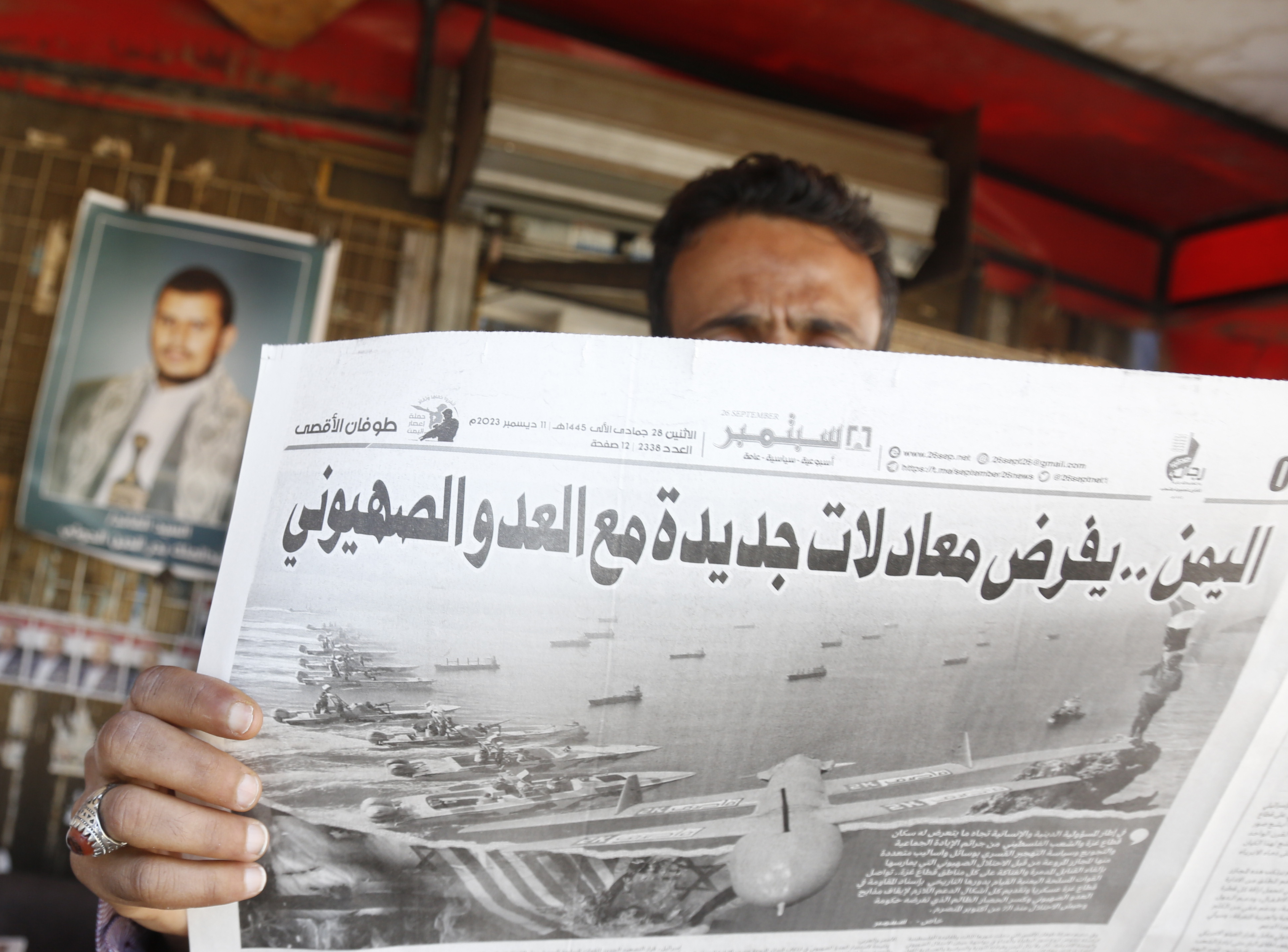
Ensuring Protection of Civilians
-
Overall Grade for US Policy: D-
-
Upward of 30,000 Palestinians have been killed in the first six months of the Israel-Hamas war, according to many estimates. More Palestinian civilians were killed in the first few weeks of Israeli airstrikes on Gaza than in all of the conflicts in Gaza combined since the 2005 Israeli withdrawal.
-
The Biden administration at first appeared reluctant to make public their concerns about how Israel was conducting the war, even though President Biden and some of his top officials, like Defense Secretary Lloyd Austin, cautioned Israel not to make some of the same mistakes the United States did in the post 9/11 wars in Iraq and Afghanistan, particularly on civilian casualties. US National Security Advisor Jake Sullivan, asked in an interview in November if Israel is operating within the rules of war, refused to answer and said that he was not going to “play judge or jury” on that question.
-
In the first quarter of 2024, a number of Biden officials became increasingly vocal publicly about concerns over the growing death toll among Palestinian civilians in Gaza, which is why the current approach has not completely failed. In addition, the Biden administration took steps in the spring to raise the costs for Israelis involved in violence and attacks in the West Bank, including imposing sanctions on Israeli settlement outposts in the West Bank and settlers it said were undermining security. These measures were in response to a spike in violence in the West Bank that occurred as the Gaza war unfolded.
-
Conclusion: The high death toll among civilians in Gaza is a result of many factors, including the tactics used by Hamas to operate in densely populated urban areas and Israel’s approach to combat. The United States did not place civilian protection as high on its list of priorities relative to other goals it had in the early stages of the war, but this may have begun to shift in recent weeks.
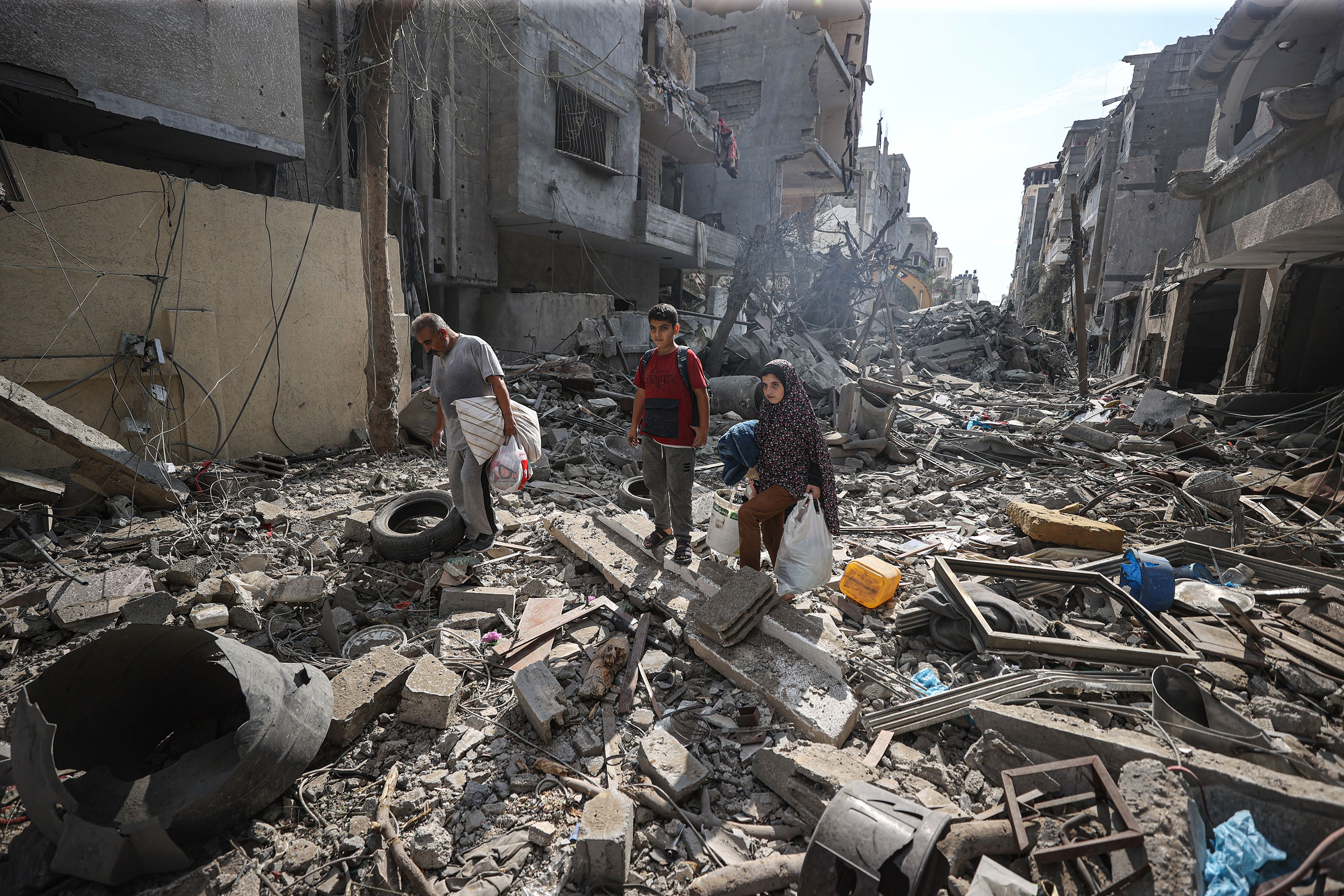
Facilitating Humanitarian Aid Into Gaza
-
Overall Grade for US Policy: D-
-
A week into the war, President Biden appointed seasoned US diplomat David Satterfield as the special envoy for Middle East humanitarian issues. The level of humanitarian aid that reached Palestinians in Gaza may have increased as a result of Washington’s early diplomatic efforts compared to what would have otherwise been the case, but it still remained gravely insufficient to meet the needs of Palestinians.
-
The increasingly dire humanitarian situation unfolding for Palestinians living in the Gaza Strip prompted the Biden administration to take a different approach about four months into the war. International and humanitarian organizations have raised alarms about the risks of a famine, with some reports of Palestinian children dying of malnutrition. The US Agency for International Development confirmed that famine had broken out in northern Gaza in the early spring of 2024. In March, the United States started to airlift aid into the Gaza Strip in coordination with Jordan and announced plans to create a temporary port in Gaza to deliver additional aid. The US-Israel public rift over a possible Rafah operation has been contentious in large part due to concerns about civilian protection measures and humanitarian aid.
-
A series of vetoes by the United States on resolutions at the United Nations Security Council that aimed to prioritize the delivery of humanitarian aid to Palestinians in Gaza sent a mixed message, even as US officials explained that the vetoes were related to aspects of the language in the draft resolutions on issues other than humanitarian aid.
-
The lack of law and order and absence of a clear plan to maintain security inside of Gaza makes it extremely difficult to appropriately distribute aid on the ground.
-
The April 1 Israeli attack that killed seven World Central Kitchen workers appears to have galvanized some quick policy shifts on the humanitarian aid issue, including the announcement of the opening of new humanitarian aid corridors by Israel. Time will tell if Israel abides by its new commitments to allow additional channels for aid.
-
Conclusion: It remains to be seen whether these shifts will be significant enough to address the enormity of the human security challenges unfolding among ordinary Palestinians in Gaza. The top US policy priorities clearly have been supporting Israel’s self-defense and its effort to eliminate Hamas as a security threat, along with trying to avoid a wider regional war. The objectives of ensuring civilian protection and humanitarian aid into Gaza were heretofore relegated to a lower priority relative to those other goals, as was the longer-term goal of creating a framework for a two-state solution.

Creating a Post-War Plan for Reconstruction Leading to a Two-State Solution and Wider Regional Normalization Efforts
-
Overall Grade: C-
-
Before the Oct. 7 attack and Israel-Hamas war, the Biden administration had increased its diplomatic engagement in the Middle East in an effort to set the conditions for a possible normalization deal between Saudi Arabia and Israel. It was beginning to advance a vision for greater regional integration and coordination through new projects like the India-Middle East-Europe Economic Corridor (IMEC), an ambitious plan to link the region more closely with Asia and Europe announced in September 2023 at the G20 summit in India. Jake Sullivan had sounded an optimistic tone in this period, saying, “The Middle East region is quieter today than it has been in two decades.”
-
The Israel-Hamas war placed many of those efforts on the backburner for now, but the interests of key countries in the region to ultimately see progress on those fronts remain. Some initial estimates of the reconstruction costs for Gaza already run upward of $20 billion, and those are certain to rise.
-
Early in the Israel-Hamas war, a gap between the United States and many of its Arab partners emerged, with America supporting Israel’s goal of eliminating Hamas as a threat and most of its Arab partners calling for an immediate cease-fire. Foreign ministers from Saudi Arabia, Jordan, and other key Arab and Muslim countries went on a global tour, including a stop in Washington, DC, in December, calling for a cease-fire.
-
The Biden administration started working on advancing a long-game agenda to support the idea of a two-state solution to the Israeli-Palestinian conflict. Israel’s current leaders, including Prime Minister Netanyahu, have rejected this notion, saying it would be a “huge reward for terrorism.” Other key regional actors, namely Hamas and Iran, also reject the two-state solution idea.
-
The fact that it has taken so long to get the parties this close to another temporary cease-fire deal should temper expectations about how realistic these longer-term aspirations are. The grim reality of today’s Middle East is that many actors across the region, like Iran and several leaders and factions within Israel and Palestine today, are poised to play a spoiler role and upset the delicate diplomacy aimed at ending this war and paving a new pathway to peace talks.
-
Conclusion: A US effort to build a pathway between the current situation and wider regional diplomacy to advance a two-state solution, an Israeli-Saudi normalization accord, and other peace and regional integration efforts remain nascent. The shift in public opinion across the region as a result of the Gaza war makes these longer-term elements more difficult to achieve. One missing ingredient is a coherent diplomatic framework to organize collective action with a coalition of partners in the region and around the world. Building a coherent coalition of these partners is a tricky task in this conflict — it is unlike 2014, when it was easier to construct a group that included key Arab partners that backed the fight against the Islamic State, and the regional and geopolitical landscape is nothing like what it was in 1990-91, when a different coalition was constructed to expel Iraq from Kuwait.
The US has faced tensions with key partners over its approach on Middle East policy questions in the past, including the 2003 Iraq war, the 2011 Arab uprisings, and the 2015 Iran nuclear deal. Unlike the effort to build an international coalition to fight the Islamic State in 2014, which found fairly strong regional support, the current war between Israel and Hamas will likely strain America’s ties in the Arab world as long as the fighting continues. It will also likely cloud the pathways toward longer-term visions of peace and regional integration.

Key Judgments
1. Actors in the region are the main drivers of events and trends. The facts on the ground, including the unpredictable dynamics of multiple conflicts in the Middle East and the will, intentions, and capacities of the main combatants, will determine whether any of these designs ultimately succeed.
2. The United States remains the most influential and powerful external actor in the Middle East, but it faces strong limits on its ability to determine outcomes. CIA Director Burns, who has recently been a key figure in the negotiations between Israel and Hamas, wrote in his 2019 memoir, The Back Channel, that one mistake made in US foreign policy is to apply minimalist means to achieve maximalist ends. The Biden administration may be making this mistake again. The fact that it has taken so long for the current US approach to achieve short-term results demonstrates how complicated the situation is at present. It also illustrates how difficult it will be to make the Biden team’s visions for a broader peace in the Middle East a reality. The US foreign policy discourse in recent years, however, has focused too much on America’s limits rather than on what the United States can actually get done. This negative self-talk tends to shut off avenues for creative thinking and often amounts to throwing our hands up in their air in frustration with the constraints rather than focusing on the possibilities and opportunities.
3. US policy in the Middle East continues to suffer from a lack of synchronization and integration of security and diplomatic policy approaches. Diplomacy backed by military tools and a credible threat of the use of force is historically more effective in producing stability and peace than diplomatic missions untethered from conflicts and tensions on the ground. For far too long in the two decades after 9/11, US policy in the Middle East has suffered from militarization and a prioritization of hard power over strategic diplomacy.
The Biden administration has sought to prioritize diplomacy in its rhetoric and public statements about US policy in the Middle East, but too often the diplomatic initiatives it embarked upon since the start of the Israel-Hamas war were not synchronized with its military and security policy for the region. Furthermore, the failure to deter Iran and some of its network of partners from conducting attacks across the region in the past six months demonstrates a gap in the current strategic approach by the United States. Part of the challenge remains the lack of a diplomatic approach with sufficient backing from a security and military approach that is able to shift the calculus of the adversaries and rivals America and its partners face in the region.
4. America is also hampered by divisions at home. With 2024 being an election year, the presidential match-up, along with the race for seats in both the House and Senate in November, will usher in the usual partisan rancor about nearly every issue in the public sphere, including on Middle East policy. More than six months of war and increased turmoil in the Middle East have not fundamentally shifted the overall frame for America’s political debates as the country heads toward the 2024 elections. The center of gravity in America’s political debate remains at home, with the economy and immigration registering as leading concerns among ordinary voters at the start of the year. But with so much uncertainty in the region and the wider world as well as increased unpredictability in American politics, many things could change between now and November.
The impulse to make US foreign policy a partisan wedge issue in America’s domestic politics remains quite strong. This election year may prove no different and may in fact be more convoluted due to thorny intra-party divisions among Republicans and Democrats on some Middle East policy questions. The different voices that will emerge in this complicated political debate are bound to send mixed signals to friends and foes alike in the Middle East, and fears of a pendulum swing in power by 2025 may incentivize key actors in the region to continue to hedge their bets.
5. US policy toward the Middle East remains mostly disconnected from a wider national security strategy, and the administration suffers from significant bandwidth challenges in advancing its overall national security approach. The Biden administration is experiencing some major operational bandwidth challenges in its national security apparatus. Combined with a lack of strategic focus and clear priorities in its overall foreign policy, this could hamper America’s ability to advance a more engaged strategy across the broader Middle East. Russia’s ongoing war against Ukraine and China’s actions in Asia and around the world will continue to take up much time and attention, too.
The basic impulse of the Biden administration to avoid adopting a more proactive stance in its diplomatic and military approaches across the Middle East, driven in part by the bandwidth constraints, may prolong conflicts like the Israel-Hamas war. It could also close off opportunities in the short run for advancing some of the more proactive engagement steps the Biden administration was pursuing before Oct. 7. The wider Middle East region still hangs on the precipice of a deep abyss as the war grinds on, simultaneously adding to broader geopolitical uncertainties in Europe and Asia. The current crisis will likely shape and define America’s relationship with the region for years to come.
Brian Katulis is Senior Fellow for US Foreign Policy and Senior Advisor to the President of the Middle East Institute.
Photo at the top: US Secretary of State Antony Blinken boards a plane on Jan. 7, 2024, on his way to Doha, following a stop in Amman, as part of a Middle East tour aiming to ensure the Israel-Hamas war does not spread. Photo by EVELYN HOCKSTEIN/POOL/AFP via Getty Images.
Acknowledgments
This report represents the independent analytical judgments of one scholar at the Middle East Institute based on his policy research and feedback from colleagues and peers.
The author would like to thank colleagues and peers who took time to review a draft of this report and offer comments including Zeina AlShaib, Matthew Czekaj, Rudy deLeon, Rory Dixon, Khaled Elgindy, Benjamin Freedman, John Halpin, Peter Juul, Charles Lister, Eyal Lurie-Pardes, Mara Rudman, Paul Salem, Susan Saxton, Alistair Taylor, and Marvin G. Weinbaum.
Intellectual Independence
The Middle East Institute maintains strict intellectual independence in all of its projects and publications. MEI as an organization does not adopt or advocate positions on particular issues, nor does it accept funding that seeks to influence the opinions or conclusions of its scholars. Instead, it serves as a convener and forum for discussion and debate, and it regularly publishes and presents a variety of views. All work produced or published by MEI represents solely the opinions and views of its scholars. The views in this paper are reflective only of the author’s analysis and perspective and do not necessarily represent the views of MEI.
The Middle East Institute (MEI) is an independent, non-partisan, non-for-profit, educational organization. It does not engage in advocacy and its scholars’ opinions are their own. MEI welcomes financial donations, but retains sole editorial control over its work and its publications reflect only the authors’ views. For a listing of MEI donors, please click here.











